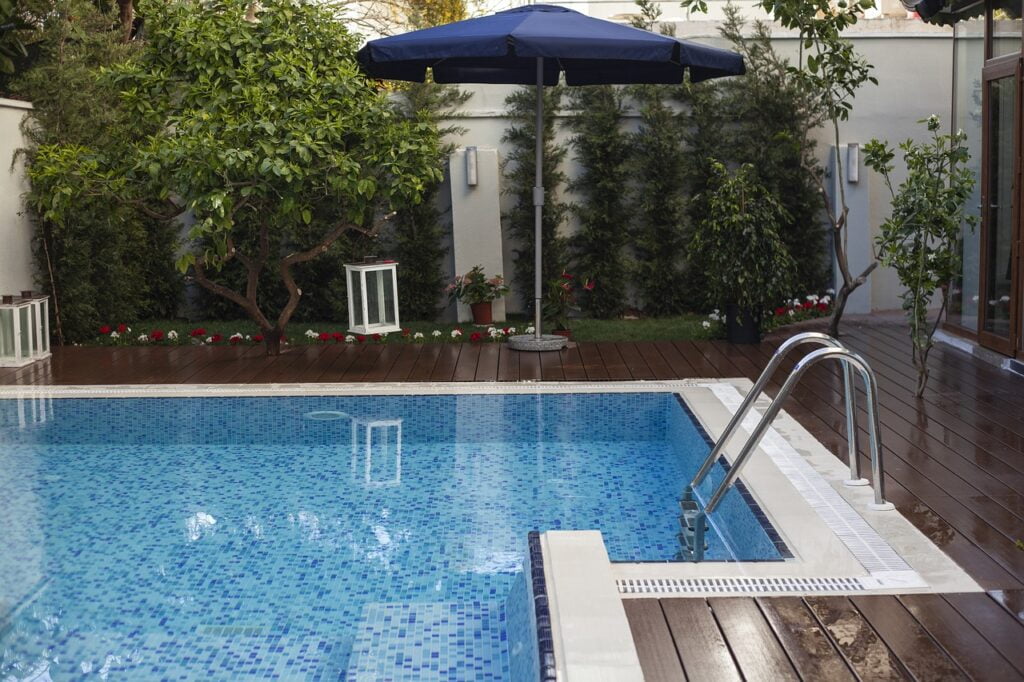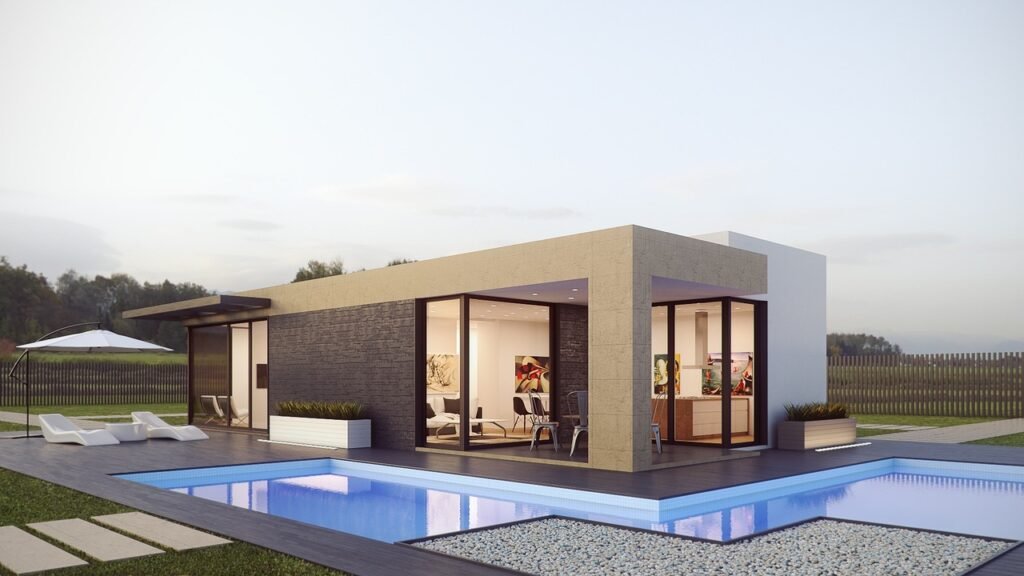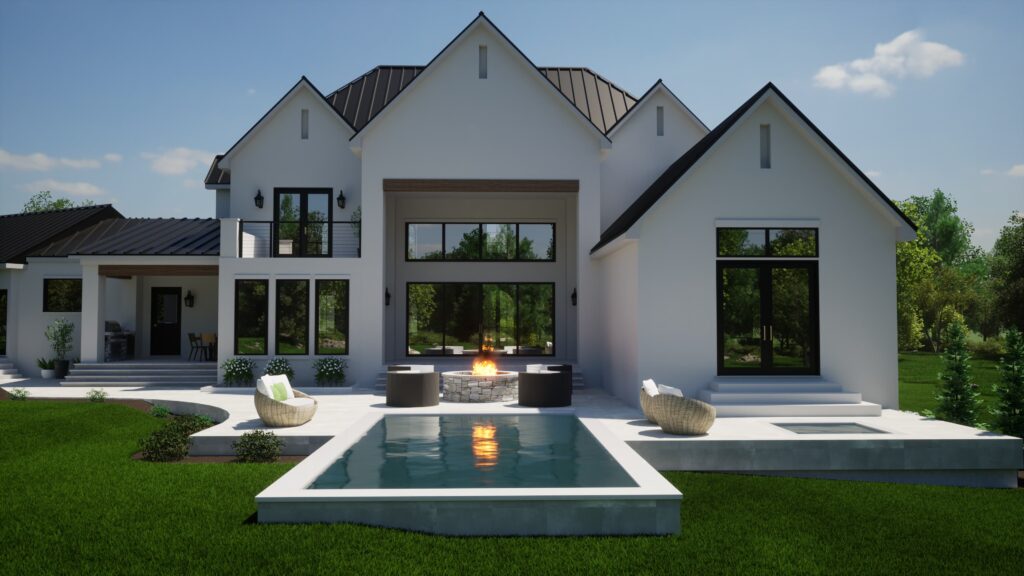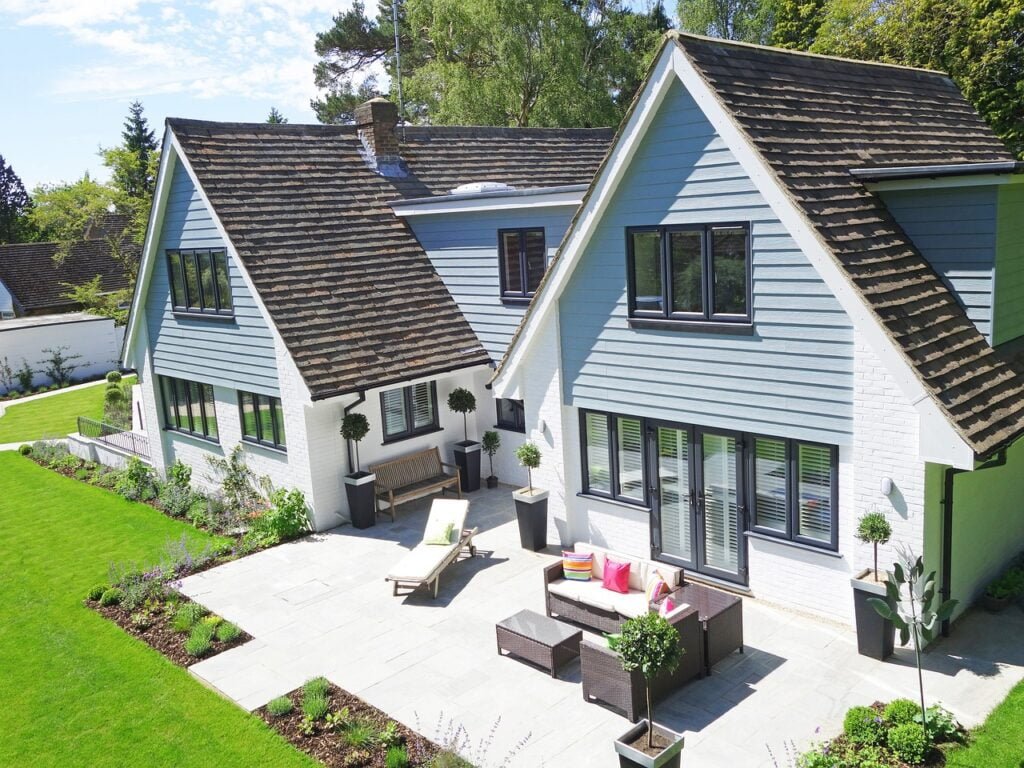Architectural 3D Animation Service
.jpg)
Curious about architectural 3D animation service and how it can benefit your projects? Numerous advantages come from better visualization of designs, cost, and time efficiency.
In this article, we explore the benefits of architectural 3D animation, the process steps, types of animations available, and how to choose the right service for your needs.
Delve into the world of architectural 3D animation with Opulent 3D Studio.
What Is Architectural 3D Animation Service?
Architectural 3D Animation Service involves the creation of dynamic and immersive visual representations of architectural designs through advanced techniques like 3D modeling, animation, and rendering.
These animations play a vital role in helping architects and designers communicate their ideas effectively to clients and stakeholders, providing a realistic preview of the proposed structures.
The process begins with the creation of a detailed 3D model of the architectural design, ensuring accuracy in proportions and details. Next, animators infuse life into the static model by adding movement and visual effects, allowing viewers to experience the space from different angles. Rendering techniques are applied to enhance lighting, textures, and shadows, resulting in a polished, photorealistic animation that showcases the architectural vision in a compelling manner.
What Are The Benefits Of Architectural 3D Animation?
Architectural 3D Animation offers a myriad of benefits, including the creation of high-quality visual representations that enhance architectural projects with innovative visualization and engaging visual storytelling.
By utilizing architectural 3D animation, professionals in the architecture and construction industries can present their designs in a more immersive and compelling way to clients and stakeholders. The detailed and lifelike visualizations allow for a deeper understanding of the project, enabling effective communication of complex ideas and designs.
3D animation facilitates the exploration of different design options and modifications, streamlining the decision-making process and saving time and resources. This technology also enables architects to showcase their creativity and vision with realistic details and dynamic presentations that set their projects apart in a visually competitive landscape.
Better Visualization of the Design
One of the key benefits of architectural 3D animation is the ability to achieve better visualization of architectural designs, allowing for the creation of photorealistic renders that showcase architectural creativity.
This technology brings designs to life in a way that traditional 2D drawings simply can’t match. The intricate details, textures, and lighting effects that can be incorporated in 3D animations provide a level of realism that helps clients and stakeholders truly understand the architect’s vision. By visualizing the project in a photorealistic manner, architects can explore different angles, lighting conditions, and materials, leading to more informed decision-making processes and ultimately resulting in stunning architectural projects.”

Cost and Time Efficiency
Architectural 3D animation offers cost and time efficiency benefits, streamlining the design process for architectural projects and optimizing resources for architectural firms.
By utilizing advanced technology, architectural firms can create realistic visualizations of their projects, allowing clients to better understand the proposed designs. This leads to fewer revisions needed, saving both time and money in the long run.
3D animations enable architects to easily experiment with different design elements and variations, facilitating a more efficient decision-making process. With increased clarity and accuracy in presenting architectural concepts, clients are more likely to approve designs sooner, accelerating project timelines and enhancing overall productivity.
Enhanced Marketing and Communication
Utilizing architectural 3D animation enhances marketing strategies and communication for architectural services, providing design studios with effective visual tools to showcase their designs and engage clients.
By incorporating 3D animation into presentations, architects can offer potential clients immersive virtual tours of proposed projects, allowing them to envision the end result with greater clarity. The dynamic nature of architectural animations enables clients to explore different angles, lighting scenarios, and spatial relationships, facilitating a deeper understanding of the design concepts. These visual representations help in communicating complex architectural ideas in a visually appealing and easily digestible format, ultimately leading to better client engagement and higher conversion rates for architectural firms.
Easy Modifications and Customizations
Architectural 3D animation allows for easy modifications and customizations in architectural designs, facilitating changes to architectural layouts and design elements with enhanced flexibility.
- This enhanced flexibility provided by 3D animation enables architects and designers to experiment with different variations of floor plans, materials, colors, and textures swiftly and efficiently. Through the use of 3D modeling software, adjustments can be made seamlessly, allowing for real-time visualization of how alterations impact the overall design.
- Design elements such as lighting, furniture placement, and landscaping can be modified with ease, offering a comprehensive view of the potential options available. The ability to make quick changes ensures that clients receive a tailored design that aligns with their preferences and requirements.

What Are The Steps Involved In Architectural 3D Animation?
The process of architectural 3D animation entails several key steps, starting from gathering information and design concepts to creating a 3D model, adding textures, lighting, animations, and finally rendering the final video for immersive visual experiences.
Once the initial information gathering phase is completed, architects and designers move on to the creation of detailed 3D models using specialized software. These models involve precise measurements and accurate representations of the architectural elements. Texturing then comes into play, where surfaces and materials are added to enhance realism. Lighting plays a crucial role in setting the mood and ambiance of the scene, ensuring that the design shines through. Animations bring movement and life to the static models, allowing viewers to experience the space in a dynamic way. Rendering processes the 3D scenes into high-quality visuals, ready for presentations and walkthroughs.
Gathering Information and Design Concept
- The first step in architectural 3D animation involves gathering information and design concepts, laying the foundation for architectural planning and conceptualizing the design elements.
By meticulously collecting data about the site, materials, and client preferences, architects and designers can create detailed and accurate representations in the virtual realm. This process not only aids in visualizing the end product but also helps in identifying potential challenges and opportunities for innovative solutions.
The design concepts infused into the animation serve as a creative roadmap, allowing stakeholders to grasp the aesthetics and functionality of the proposed structure from different angles and perspectives. Such visualizations are crucial in communicating ideas effectively and refining them to align with the overall architectural vision.
Creating a 3D Model
The next step in architectural 3D animation is creating a detailed 3D model that encompasses architectural modeling, building design, and intricate architectural details to bring the design to life.
To begin with architectural modeling, skilled animators utilize specialized software to craft a digital representation of the structure. This involves creating the building’s structure, facade, interior spaces, and landscaping elements with precision. The building design is then integrated into the model, focusing on elements such as proportions, materials, textures, and lighting.
Attention to detail is paramount, as intricate elements like furnishings, decor, and subtle embellishments are added to enhance the visual representation. The process requires a keen eye for accuracy and creativity to ensure that the 3D model accurately reflects the architectural vision.
Adding Textures, Lighting, and Animations
Subsequently, textures, lighting, and animations are integrated into the 3D model, leveraging digital design tools and architectural technology to enhance the visual appeal and realism of the architectural design.
These elements play a crucial role in bringing the virtual architectural creation to life, adding depth and dimension to the 3D model. By carefully selecting textures that mimic real-world materials such as wood, metal, or stone, designers can create a sense of authenticity and detail. Lighting is strategically placed to simulate natural light sources, casting shadows and highlights that enhance the overall ambience. Animations, such as moving doors or changing perspectives, inject movement and interactivity into the design, making it more engaging for viewers.

Rendering the Final Video
The final step in architectural 3D animation involves rendering the completed model into a compelling video format using CGI animation techniques, showcasing the design studio’s proficiency in creating high-quality 3D graphics.
This rendering process is a crucial stage where the 3D graphics are brought to life with lighting, textures, and visual effects to enhance realism. Design studios utilize advanced software tools to fine-tune every detail, from the play of light on surfaces to the minutiae of architectural elements. By applying techniques like ray tracing and ambient occlusion, the animation gains depth and authenticity. Through this meticulous process, the design studio can deliver a final video output that not only impresses clients but also provides a true-to-life representation of the architectural project.
What Are The Different Types Of Architectural 3D Animation?
Architectural 3D Animation encompasses various types, including Exterior Animation, Interior Animation, Flythrough Animation, and Walkthrough Animation, each offering unique perspectives and insights into architectural designs.
- Exterior Animation focuses on showcasing the outer elements of a building, such as facade design, landscaping, and overall structure, giving viewers a detailed look at how the building interacts with its environment.
- On the other hand, Interior Animation delves into the interior spaces, highlighting room layouts, decor, lighting, and spatial flow to convey the ambiance and functionality of the design.
- Flythrough Animation provides a dynamic aerial journey around and through the architectural structure, offering a bird’s eye view of the entire project.
- Walkthrough Animation, on the other hand, simulates a virtual tour, allowing viewers to navigate through the design as if they are physically present within the space.
Exterior Animation
Exterior Animation in architectural 3D animation focuses on visualizing the exterior design elements of buildings and structures, providing photorealistic renders that highlight modern and contemporary architectural aesthetics.
By utilizing advanced rendering techniques, Exterior Animation plays a crucial role in presenting intricate details such as facades, materials, textures, and lighting effects with unparalleled realism. Through these visualizations, viewers can immerse themselves in the envisioned spaces, gaining a deeper understanding of how modern architecture principles like clean lines, open spaces, and innovative forms harmonize to create visually stunning structures.
These animations not only serve as design tools for architects and developers but also captivate clients and stakeholders, enabling them to envision the end result and make informed decisions regarding architectural design choices.

Interior Animation
Interior Animation involves showcasing the interior design aspects of architectural projects, highlighting architectural details, and presenting creative design solutions that demonstrate architectural creativity and innovation.
Through sophisticated visualization techniques and digital tools, Interior Animation offers a compelling way to bring architectural concepts to life, allowing viewers to explore and experience spaces before they are physically built. By focusing on interior spaces, this form of animation delves deep into the aesthetics, functionality, and ambiance of a building, providing a holistic view of the design. It enables architects and designers to experiment with different layouts, materials, and furnishings, resulting in innovative solutions that push the boundaries of traditional architectural practices.
Flythrough Animation
Flythrough Animation offers a dynamic exploration of architectural layouts and spatial designs, utilizing visual storytelling techniques and engaging 3D animation production to provide immersive experiences for viewers.
By seamlessly navigating through intricate layouts and structures, Flythrough Animation allows viewers to visualize the scale, proportions, and intricate details of a space with a sense of depth and realism. This immersive quality enables architects, designers, and clients to fully grasp the spatial relationships within a building, enhancing communication and decision-making processes during the design phase. Through the strategic placement of virtual cameras and animated movements, Flythrough Animation brings life to static architectural plans, captivating audiences with a realistic and captivating visual journey.
Walkthrough Animation
Walkthrough Animation enables virtual tours of architectural projects, offering interactive experiences that engage viewers through visual storytelling elements, providing a comprehensive understanding of the design concepts.
By immersing the audience in a dynamic digital environment, walkthrough animations allow them to virtually navigate through spaces, observe intricate details, and grasp the spatial relationships within the architectural design. Through the strategic integration of lighting effects, textures, and realistic movements, these virtual tours create a sense of realism that goes beyond static renderings or drawings. This interactive approach not only enhances viewer engagement but also enables architects and designers to communicate their vision more effectively, conveying the essence and functionality of the structure in a captivating way.
How To Choose The Right Architectural 3D Animation Service?
Selecting the right Architectural 3D Animation Service involves evaluating factors such as portfolio quality, communication capabilities, and cost considerations to ensure a successful collaboration for your architectural projects. Look no further than Opulent 3D Studio!
- When assessing the portfolio quality of a potential Architectural 3D Animation Service provider, it is crucial to look for a diverse range of previous projects showcasing proficiency in various architectural styles and techniques.
- Effective communication is also key; ensure that the service provider is responsive, transparent, and able to understand and incorporate your vision into the animation process.
- Considering cost factors is important to align your budget with the scope of work and quality of service offered by the provider. By prioritizing these aspects, you can establish a strong partnership and achieve remarkable results in your architectural endeavors.
Portfolio and Experience
Assessing the portfolio and experience of an Architectural 3D Animation Service provider is crucial for understanding their expertise and past projects, ensuring compatibility with your architectural firm’s requirements and standards. That’s what separates Opulent 3D Studio from the rest.
By evaluating their portfolio, you can gain insights into the types of projects they have worked on and their level of creativity and technical skills. Past projects showcase their ability to bring architectural designs to life through 3D animation, giving you a glimpse of the quality and style of their work. Reviewing their experience allows you to determine if they have the necessary knowledge and proficiency to meet your firm’s specific needs and standards.
This assessment process is essential in ensuring a successful partnership and achieving desired outcomes in your architectural projects.

Quality of Work
Evaluating the quality of work in Architectural 3D Animation involves assessing the level of detail in architectural visualization, rendering techniques, and industry standards to ensure high-quality deliverables for architectural projects.
It is crucial to pay attention to every aspect of the architectural 3D animation process, including the accuracy of textures, lighting effects, and spatial design. A keen eye for detail is essential in capturing the essence of the architect’s vision and bringing it to life through animation. Adherence to industry standards such as realistic scale representation, accurate shadowing, and lifelike textures is paramount to create a compelling visual experience for clients and stakeholders. By focusing on these key elements, animators can elevate their work to meet the demanding standards of the architectural visualization industry.
Communication and Collaboration
Effective communication and collaboration are essential factors in selecting an Architectural 3D Animation Service, ensuring seamless interactions, feedback integration, and alignment with the objectives of your architectural services or design studio.
This emphasis on communication and collaboration is particularly crucial in the dynamic realm of architectural design, where visualizations play a pivotal role in conveying concepts and ideas effectively. By prioritizing clear lines of communication and fostering collaborative relationships, you can ensure that the 3D animation service provider truly understands your vision and can translate it into compelling animations that resonate with your target audience.
Seamless interactions and efficient feedback mechanisms help in fine-tuning the animations to align perfectly with the unique aesthetic and functional goals of your projects, ultimately enhancing the overall quality and impact of your architectural services.
Cost and Timeline
Considering the cost and timeline aspects is vital when choosing an Architectural 3D Animation Service, ensuring alignment with the budget constraints and project schedules of real estate development and architectural technology ventures.
An effective way to evaluate the cost aspect is by requesting detailed project quotes from multiple service providers and comparing them to identify the best value proposition.
It’s also crucial to inquire about any additional or hidden fees that may impact the overall project budget.
Likewise, understanding the estimated timeline for the 3D animation project is essential for planning purposes, as delays can significantly affect the development and marketing schedules of architectural projects.
Frequently Asked Questions
An Architectural 3D Animation Service is the process of creating visually stunning and realistic 3D animations of architectural designs or structures. This service is often used by architects, designers, and real estate professionals to showcase their projects in a dynamic and interactive way.
At Opulent 3D Studio, we pride ourselves on our team of highly skilled and experienced animators who use the latest technology and techniques to bring your architectural designs to life. We also offer competitive pricing and fast turnaround times without compromising on quality.
By utilizing an Architectural 3D Animation Service, you can effectively communicate your vision and ideas to clients and stakeholders in a visually appealing and engaging way. This can lead to quicker approvals, increased sales, and a better understanding of the design process.
We can provide Architectural 3D Animation Service for a variety of projects including residential and commercial buildings, interior design, urban planning, and landscaping. Our team has experience in creating animations for projects of all sizes and complexities.
Yes, at Opulent 3D Studio, we understand that changes and revisions may be necessary during the animation process. That’s why we offer multiple rounds of revisions to ensure that the final product meets your expectations and vision.
Getting started with our Architectural 3D Animation Service is easy! Simply reach out to us through our website or contact us directly to discuss your project and receive an accurate quote. Our team will guide you through the process and keep you updated every step of the way.

Stay Connected with Opulent 3D Studio
Don’t miss out on the latest from the world of 3D rendering! Follow Opulent 3D Studio on our social media platforms. Stay updated with our recent projects, industry insights, and behind-the-scenes peeks into our creative process. Connect with a community of 3D rendering enthusiasts, share your thoughts, and be part of our growing network. Find us on:

